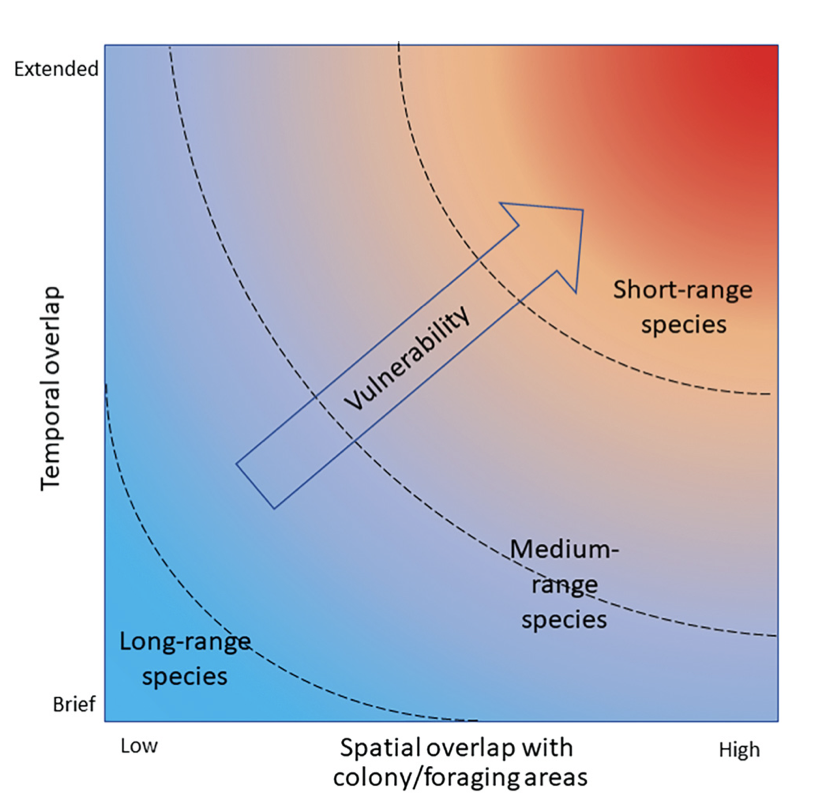 Figure 5. from the paper which presents vulnerability of seabirds to marine heatwaves (MHWs) is related to the spatial overlap/proximity of the event to breeding and foraging areas, and to the duration of the temporal overlap. Vulnerability is indicated by warmer colours, and the dashed lines are representative of equiva- lent vulnerability. For example, an extended MHW with low spatial overlap will have a similar impact to a brief MHW that has high overlap
Figure 5. from the paper which presents vulnerability of seabirds to marine heatwaves (MHWs) is related to the spatial overlap/proximity of the event to breeding and foraging areas, and to the duration of the temporal overlap. Vulnerability is indicated by warmer colours, and the dashed lines are representative of equiva- lent vulnerability. For example, an extended MHW with low spatial overlap will have a similar impact to a brief MHW that has high overlap
Eric J. Woehler (Australasian Seabird Group, Hobart, Tasmania, Australia) and Alistair J. Hobday have published open access in the journal Marine Ecology Progress Series, on how a seabird’s life experience could play a role in moderating the effects of marine heatwaves.
The paper’s abstract follows,
“Marine heatwaves (MHWs) are periods of anomalously warm water associated with changes in ocean structure, based on the horizontal advection of water masses and atmospheric exchange of heat. The longest MHWs persist for many months, and dramatic effects on marine life have been reported from around the world. As top-order predators, seabirds are particularly sensitive to MHWs, with high levels of mortality associated with some events, but not with others. Thus, prediction of impacts is not straightforward, as mortality is not linearly related to simple measures of MHW intensity, persistence, and areal coverage. We describe biological responses expected for seabirds, based on demographic parameters and the geographic proximity and phenological timing of MHWs with respect to seabirds. The expected interactions between seabirds and MHWs will be complex (with some responses likely to be unpredictable) and will extend over broad spatial and temporal scales. The spatial proximity of anomalous marine conditions to breeding colonies, their overlap with foraging areas, and the degree to which MHWs coincide with pre-breeding and breeding seasons presently generate the greatest pressures on seabird populations. We posit that area-restricted seabird species, in terms of movement and breeding strategies, are at greater risk from MHWs, but that non-linear effects complicate prediction. The impacts of MHWs on seabirds may be mediated by their life history strategies.”
Reference:
Woehler, E.J., Hobday, A.J. 2023. Impacts of marine heatwaves may be mediated by seabird life history strategies. Marine Ecology Progress Series. https://doi.org/10.3354/meps14333
25 August 2023

 Español
Español  English
English  Français
Français